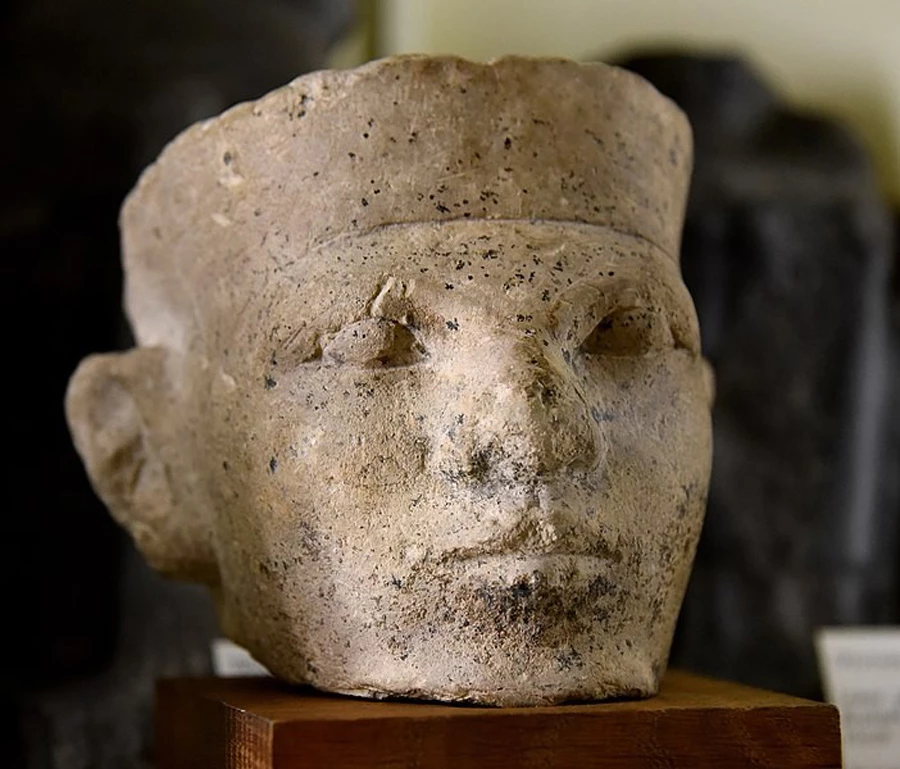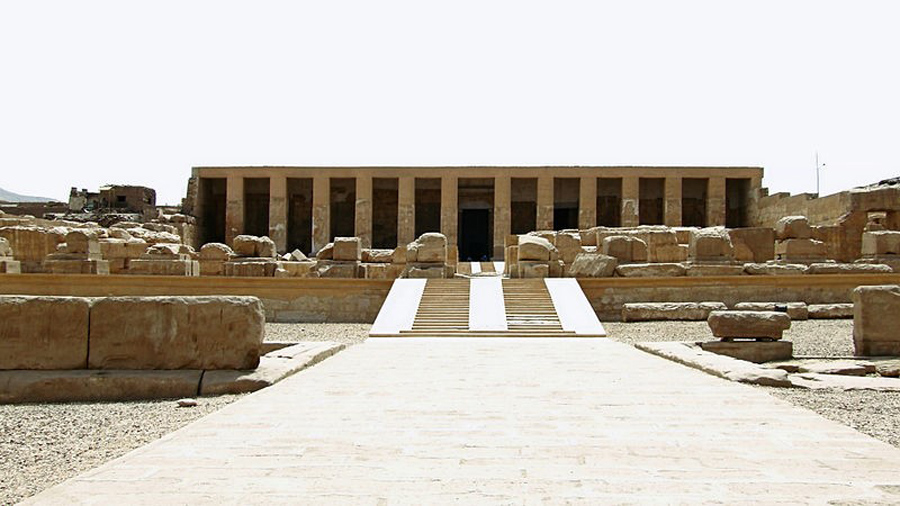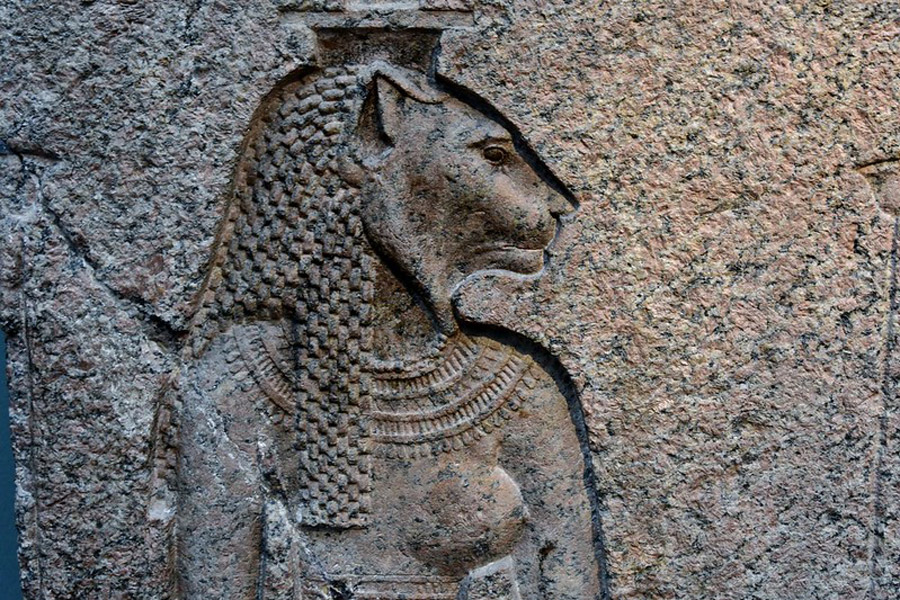Far back in the earliest history of Egypt, before Thebes and Memphis, before the sphinx and the great pyramids of Giza, lies the early dynastic period of Egypt. This period following the unification of Upper and Lower Egypt around 3,100 BC, is the first great moment in a kingdom which would last for millennia.
The early dynasties seem strange when compared to the familiar traditions of later Egypt. The mortuary cults and the obsession with the afterlife, expressed through the vast necropolises and pyramids, were all in the future.
These early bronze age kings ruled from their capital of Thinis. This legendary capital, Egypt’s first, was attested by later Egyptian historians and priests, but the modern world has no idea where it is.
Ancient authors like Manetho, an Egyptian priest who lived during the Ptolemaic period thousands of years later, refer to Thinis in their writings. The lost city has also been mentioned in a number of religious texts like The Book of Going Forth by Day, more popularly known as the Egyptian Book of the Dead.
Some archaeologists suggest that the city would have been located near Abydos or in the modern city of Girga, but the exact location of the city remains a mystery. What do we know about this ancient city, and will we ever find it?
Thinis and Menes
Even though the location of Thinis remains undiscovered, it is a safe bet that it is situated near Abydos, one of the oldest cities of Egypt. This would place the Egyptian capital far from the Nile delta, surrounded by the harsh deserts of north Africa and entirely dependent on the Nile.
The 1st Dynasty of Egypt, the true start of Egyptian history, begins with one man whom Manetho calls Menes. This pharaoh was the leader of the Thinite Confederacy, a tribal confederation of what was later called Upper (southern) Egypt.

Menes united Upper and Lower (northern) Egypt and transformed his confederation into a kingdom running the length of the Nile, and it is reasonable to assume he based his capital near where he came from. Thinis would continue to serve as the Egyptian capital for the next 500 years.
- The Ogdoad: When Amun Ruled the Gods of Egypt
- Did Nitocris, First Ancient Egyptian Queen, Truly Exist?
However, this great first city of the Egyptians would be lost to time. After the turmoil of the second dynasty of Egypt, in the time of the third dynasty from 2,650 BC the city started to shrink rapidly. The new pharaohs, seeking to restore order, founded a new capital nearby which they called Memphis, far to the north.
Thinis, as home to the pharaohs of the first and second dynasties, would have been a city of great significance, and the look of the capital can be imagined. The construction of Thinis could be similar to ancient Egyptian cities such as Nekhen, with grand stone buildings served by many square mud complexes.
As a military and political center, Thinis would have played an important role in the process of unification by providing food, weapons, as well as troops to the armies of the pharaoh. However we cannot know for certain whether Thinis had its own necropolis, given the presence of the tombs of many early dynasty kings in nearby Abydos.
The Lasting Wealth of Thinis
According to the written sources, Thinis was a city of great riches. Even after the city was supplanted by Memphis as the capital of ancient Egypt, it remained wealthy. As late as the rule of Thutmose III, the 6th pharaoh of the 18th dynasty ruling 1,500 years after the founding of Egypt, the annual tax that was imposed on Thinis was recorded as six debens (a deben was around 91g or 3.2 oz) of gold, produce like cattle, grain, and honey, and half a deben of silver.
The wealth possessed by Thinis all these years later was still higher than that of nearby Abydos. Abydos had to pay only three sacks of grain on a yearly basis, compared to 65 sacks of grain from Thinis. Such taxes are evidence of the great wealth that the city of Thinis continued to generate, throughout Egyptian history.
This paints a picture of Thinis as a city which, although no longer the capital, continued to thrive through successive Egyptian dynasties. References from Manetho give the impression of a city which was well known, even as late as the late Ptolemaic period when he lived, around the 3rd century BC.

Furthermore, the type of taxation can tell us something about the city. While Thinis was undoubtedly a religious center, the taxes show that the primary material value the city and its surrounding lands had was as farmland.
Most of the ancient Egyptians were farmers who were tied to their lands. They lived in domestic dwellings constructed with the use of perishable materials such as wood and mudbricks, and only important structures like tombs and temples that were meant to last longer were built of stone instead of mudbricks.
- Treasure of the Sands: Lost Egyptian “Golden City” Found near Thebes
- The Mysterious “Set”: An Ancient Egyptian Cryptid?
Could Thinis, from the earliest period of Egypt, lack these stone structures in sufficient number to draw the attention of modern archaeology? Could the first capital of Egypt have simply returned to the desert?
A Religious Capital
This does not seem entirely likely however, given the importance of Thinis as a religious center through much of Egyptian history. From the first, the city played an important role in molding the religious beliefs of the people of ancient Egypt.
Thinis had a temple dedicated to Anhur, the god of war. The ancient Egyptians worshipped Anhur after the death of Khenti-Amentiu, a prototypically jackal-headed deity known as the “first of the dead”. In Thinis, the high priest who served at the temple of Anhur was referred to accordingly as the first prophet, or the chief of seers.
We even know some of their names. One of these high priests was called Anhurmose. He is believed to have died during the rule of the pharaoh Merneptah at the end of the 13th century BC.
Thinis was also an important religious center for Mehit, another ancient goddess from the earliest Egyptian dynasties. Mehit, with the head of a lion, was said to have come from Nubia in the far south of ancient Egypt.

But the city itself also came to have a spiritual meaning for the people of Egypt. According to the Book of the Dead, Thinis was associated with the afterlife as a kind of Egyptian heaven, becoming a celestial city instead of an earthly city.
Waiting to be Found
The city of Thinis has been well-attested in a number of written sources of ancient Egypt. However, its exact location remains a mystery to us, as does what ultimately happened to this earliest of the great cities of Egypt.
One thing is for sure however: Thinis existed. What remains of the city, and the secrets it can tell us of the first pharaohs, awaits us somewhere under the sands.
Top Image: Thinis was a center of worship for Khenti-Amentiu, jackal-headed god and precursor to Anubis. Source: MiaStendal / Adobe Stock.
By Bipin Dimri